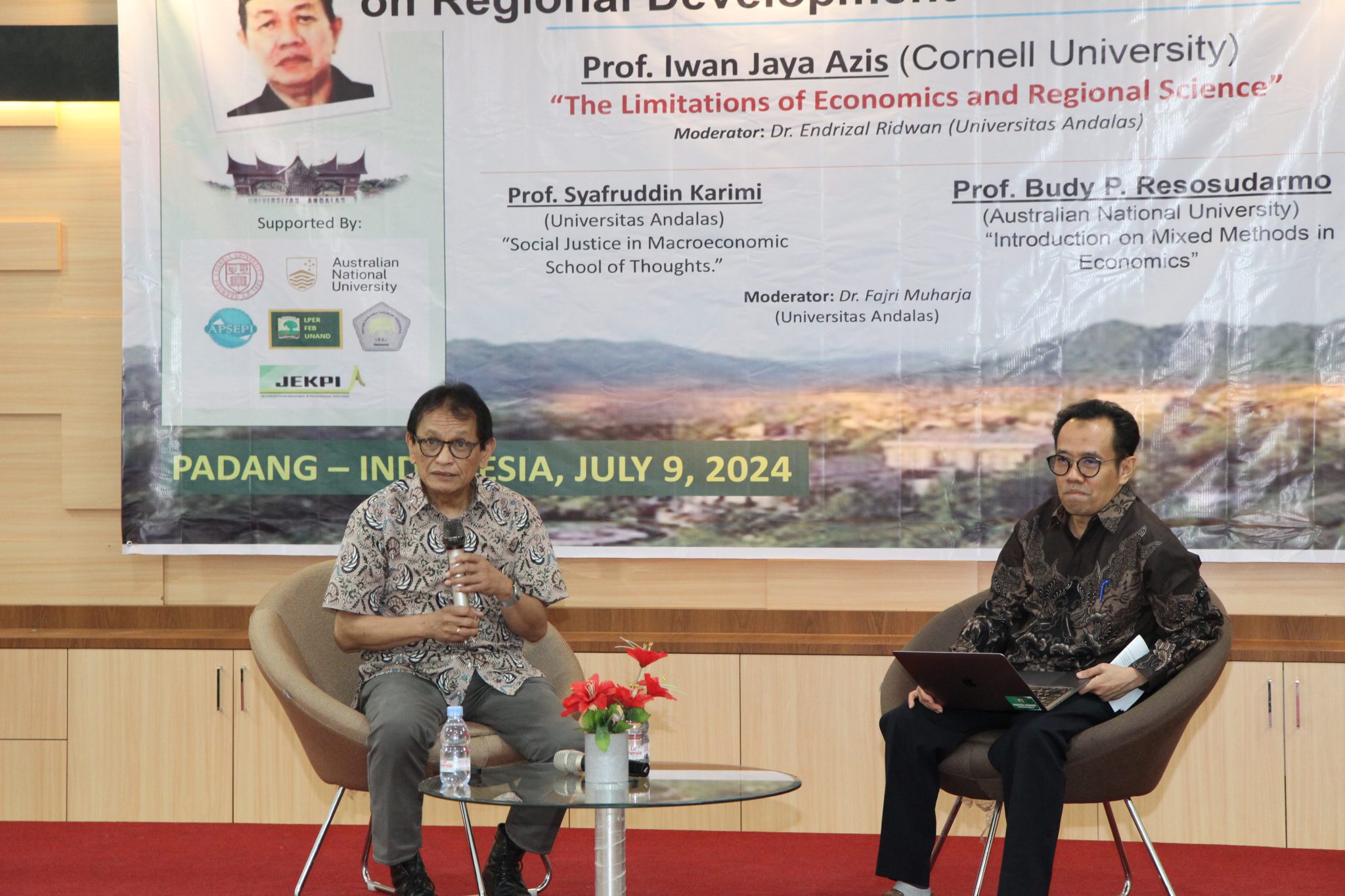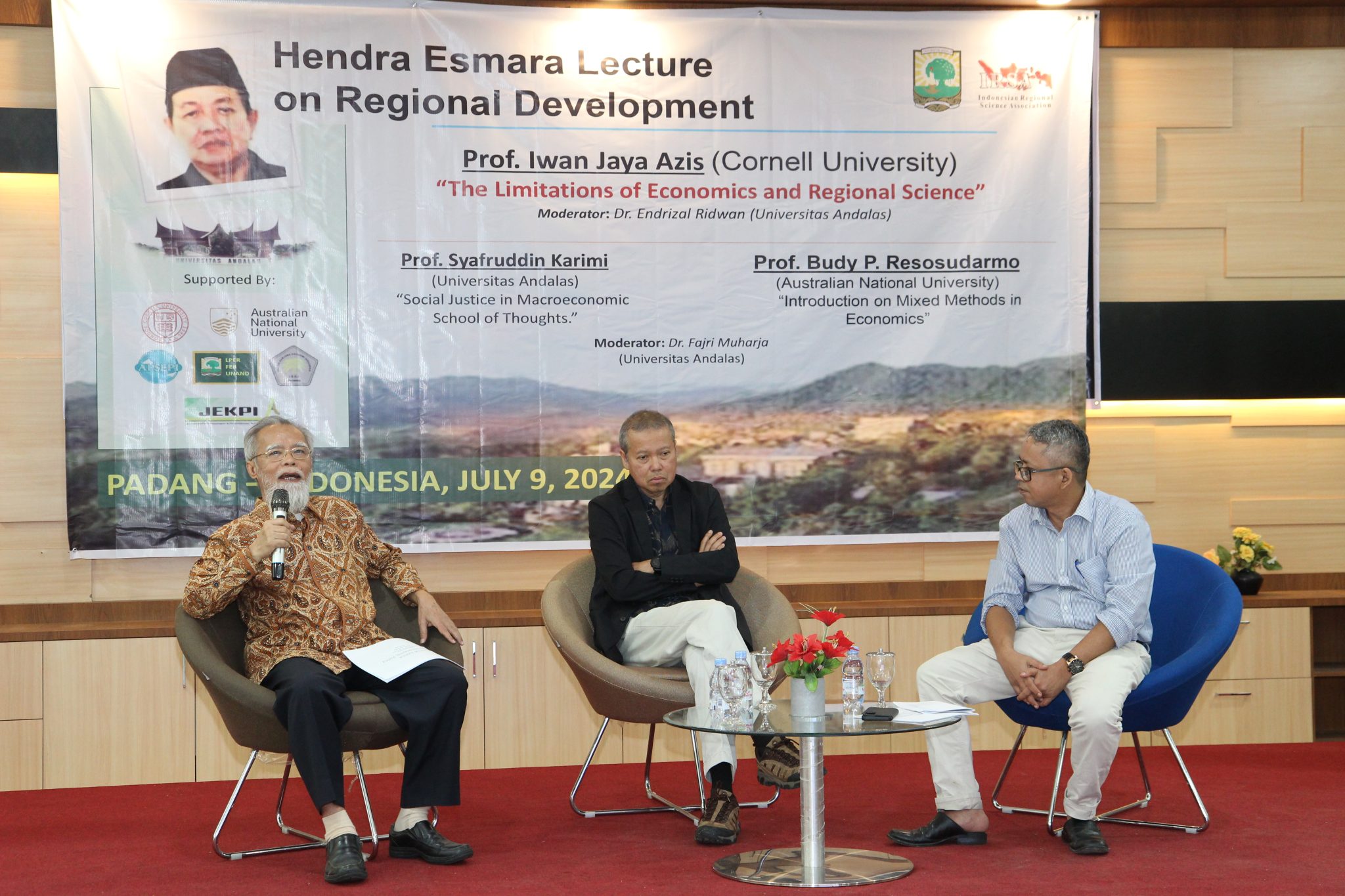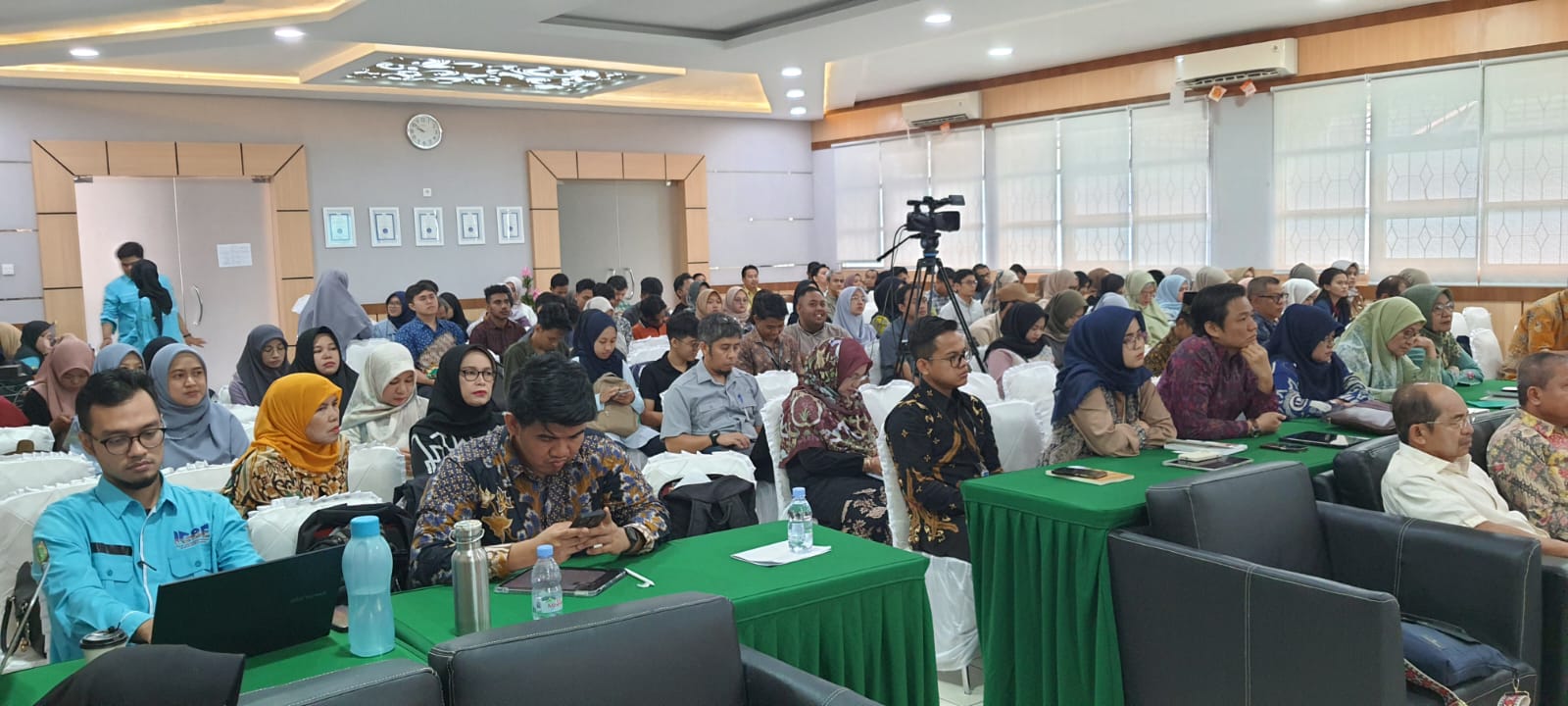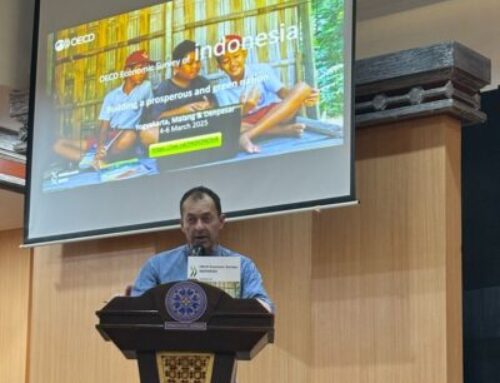FKP hosted by Universitas Andalas and the Indonesian Regional Science Association (IRSA) with Professor Iwan Jaya Azis (Cornell University and Universitas Indonesia) , Professor Syafruddin Karimi (Universitas Andalas) and Professor Budy Resosudarmo (The Australian National University). Tuesday, 9 July 2024.
KEY POINTS:
- Professor Iwan Jaya Azis emphasized the critical importance of including spatial elements—such as location, distance, and regional disparities—into economic models. He argued that traditional models’ fixation on mathematical equilibrium often neglects these factors, which are essential for understanding and addressing real-world development challenges, particularly in addressing interregional inequality in countries like Indonesia.
- The panel discussion following Professor Azis’s lecture featured presentations by Professors Syafruddin Karimi and Budy P. Resosudarmo. Professor Karimi explored the concept of social justice across various economic theories, advocating for a holistic approach that combines elements from different traditions to create more equitable and inclusive macroeconomic policies. Meanwhile, Professor Resosudarmo highlighted the value of integrating qualitative and quantitative methods in economic analysis to capture the full depth of policy impacts.
SUMMARY
- The Hendra Esmara Lecture on Regional Development is convened by the Faculty of Economics and Business, Universitas Andalas and the Indonesian Regional Science Association (IRSA) in honor of the late Professor Hendra Esmara for his pioneering work in the field of regional analysis in Indonesia. In this lecture, Professor Iwan Jaya Azis (Cornell University and Universitas Indonesia) critically examined the limitations of traditional economic theories and regional science in addressing contemporary global challenges, and highlighted the importance of incorporating spatial factors into economic models.
- Traditional economic models have a fixation on achieving mathematical equilibrium without adequately considering the role of space—location, distance, and regional disparities—which are essential for understanding and addressing real-world development challenges. This approach highlights how location and distance influence economic activities, migration patterns, and regional inequalities. Professor Azis argued that by neglecting these spatial elements, traditional models miss out on key dynamics that drive development and perpetuate inequality. As a case in point, Indonesia’s interregional inequality suggests that regional disparities within the country are more pronounced than in the other nations compared..
- In addition to not adequately considering the role of space, Professor Azis also discussed the complexity of interactions and links; risks associated with agents’ behavior; importance of understanding institutions (such as social capital and culture) in shaping development outcomes; and the excessive reliance on deductive reasoning in traditional models in traditional economic models.
- After Professor Iwan Jaya Azis’s lecture, Professor Syafruddin Karimi (Universitas Andalas) presented his thoughts on how different economic schools of thought conceptualize social justice and their implications for policy. For instance, while classical economics emphasizes market efficiency and minimal government intervention, Keynesian economics advocates for active government involvement to address inequalities and provide social safety nets. Marxian economics, on the other hand, focuses on eliminating class distinctions and redistributing wealth through collective ownership, whereas Islamic economics integrates ethical considerations, such as wealth redistribution through Zakat, to ensure social justice. Professor Karimi also presented a critique of the different approaches and the importance of considering multiple perspectives.
- The final presentation by Professor Budy P. Resosudarmo introduces the mixed method approach in economic analysis. Professor Resosudarmo argued that traditional quantitative methods, while powerful in establishing causal relationships, often oversimplify complex social interactions and fail to capture the full depth of policy impacts. He emphasized the value of mixed-method approaches that combine rigorous statistical analysis with qualitative insights. This approach is particularly relevant for impact evaluations. Further he discussed the limitations of purely quantitative methods and benefits of incorporating qualitative methods.







